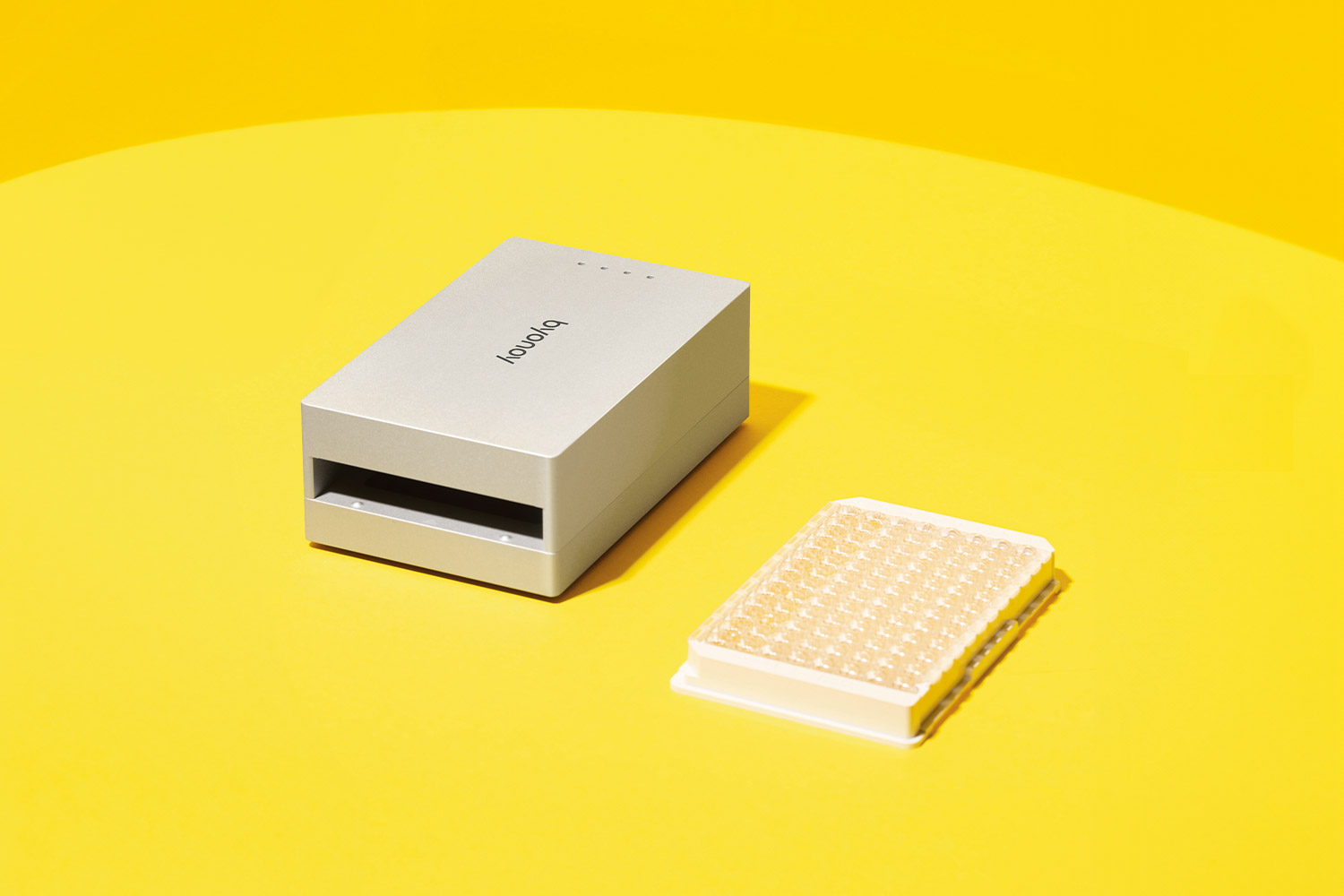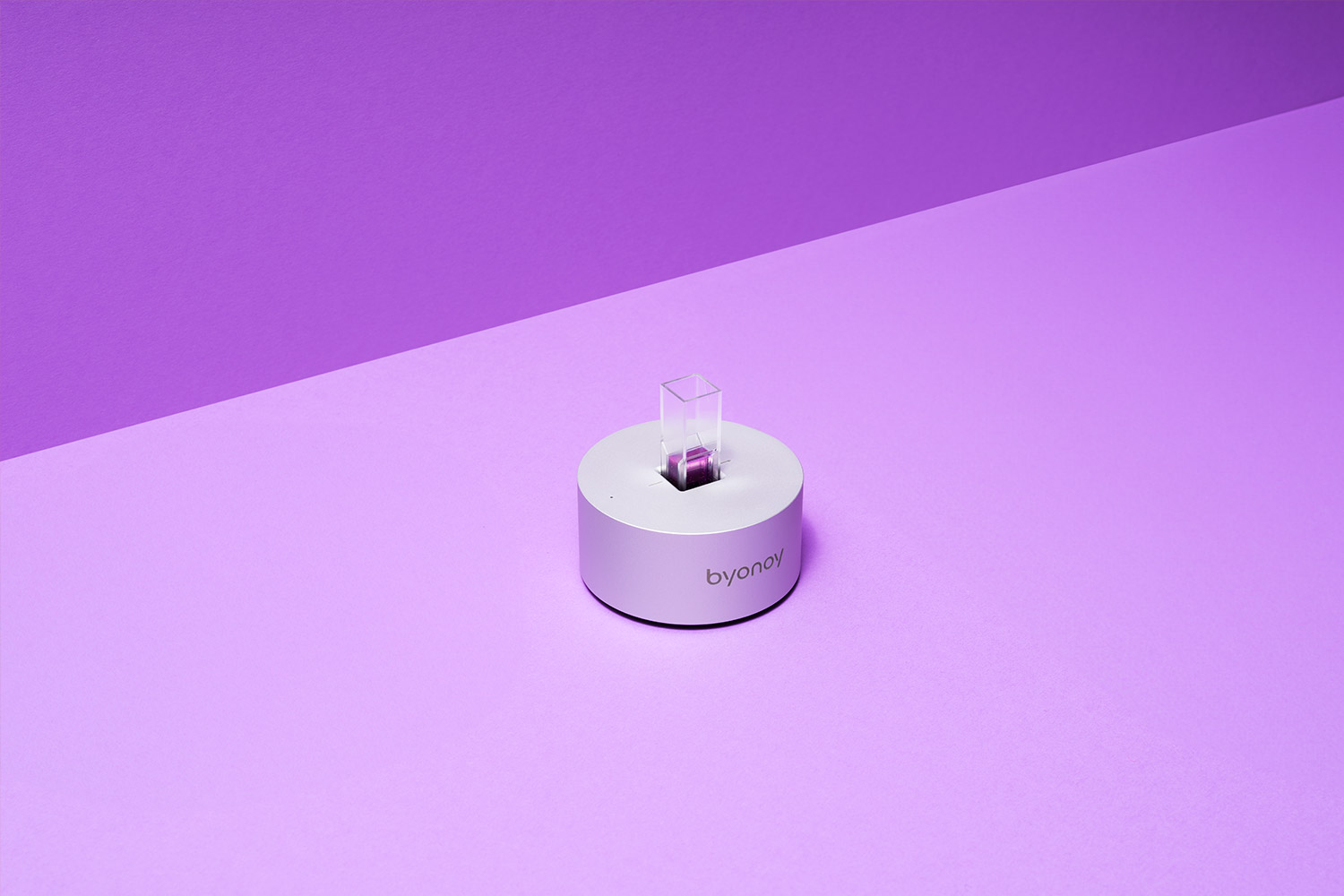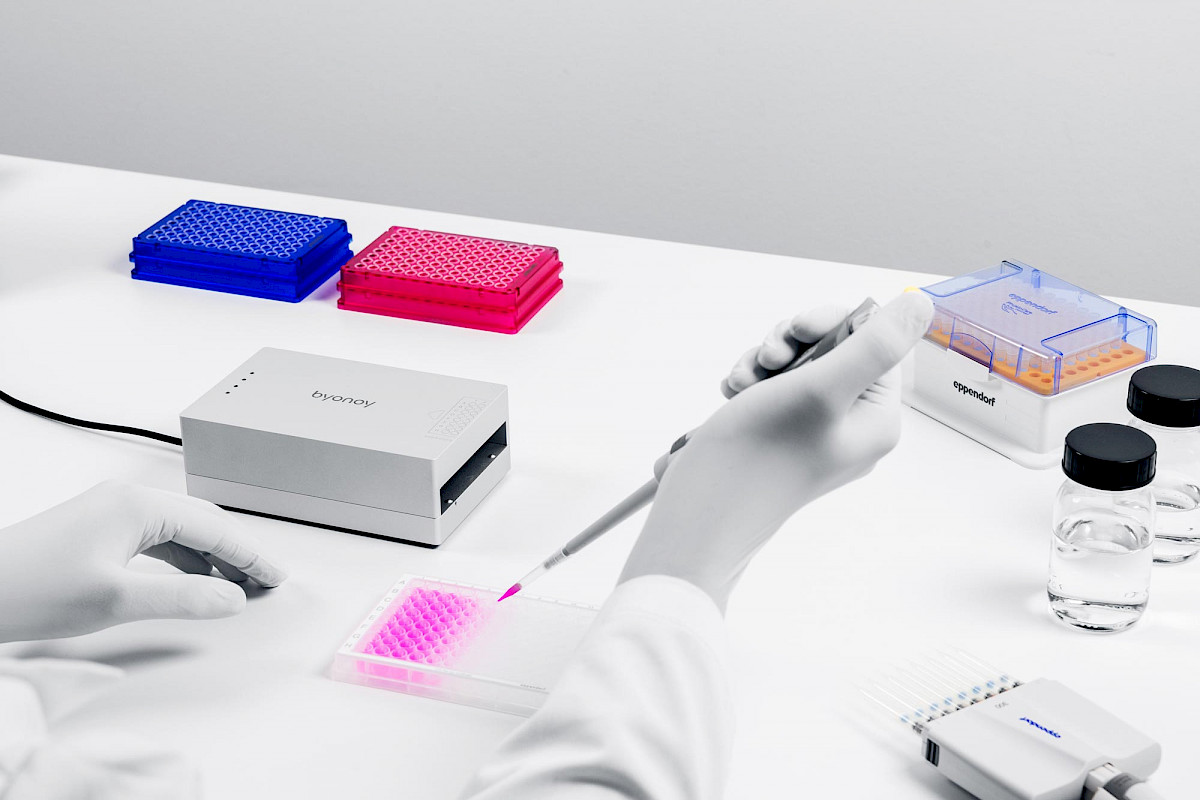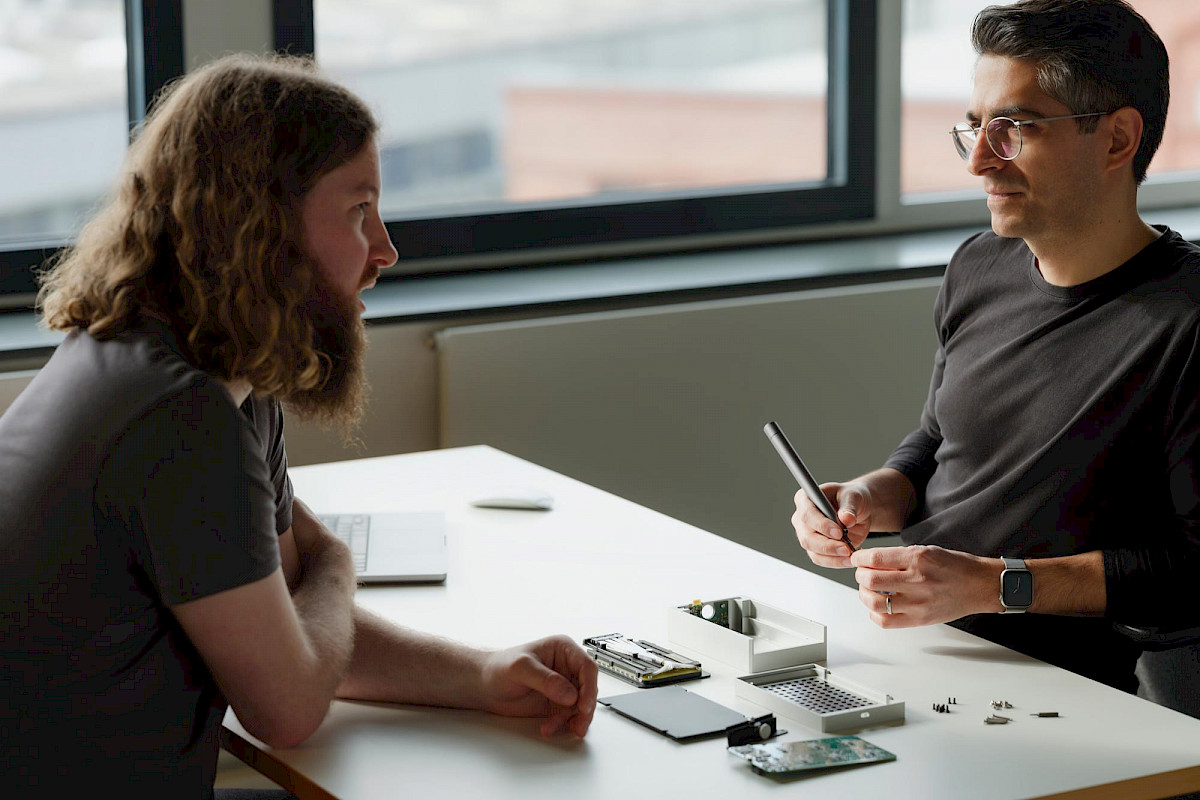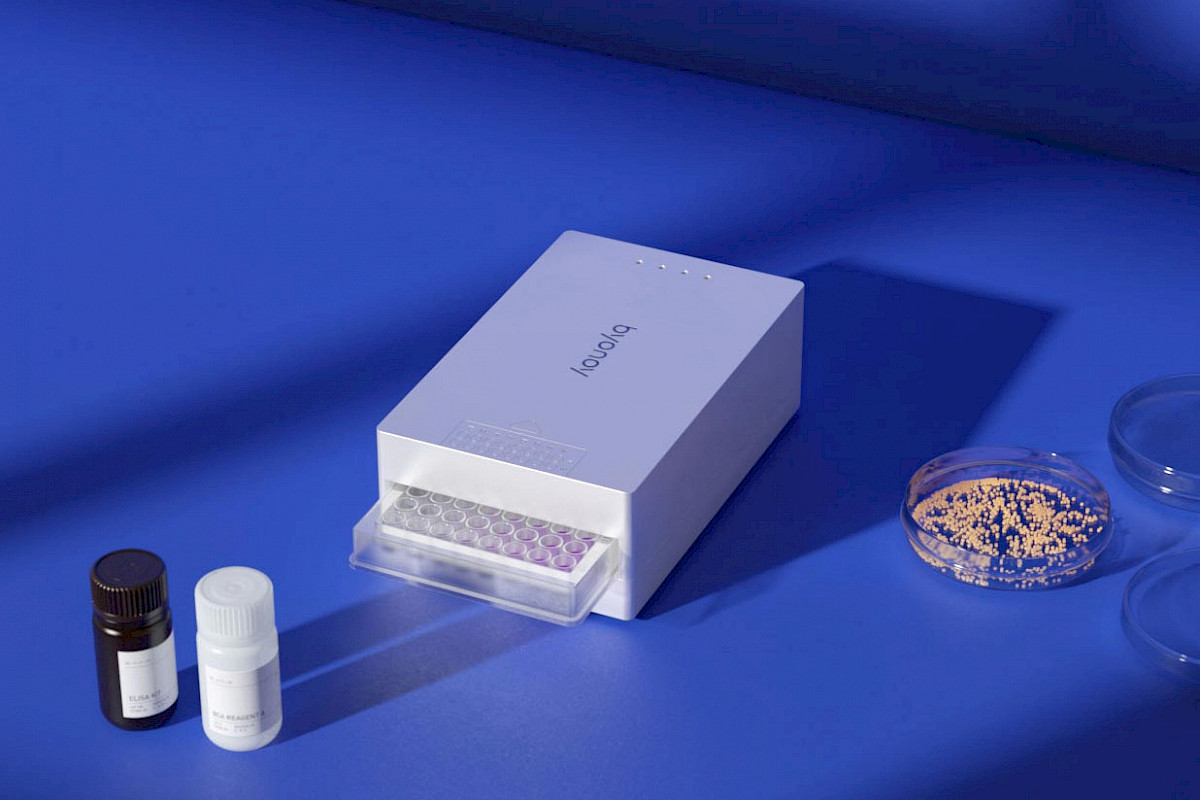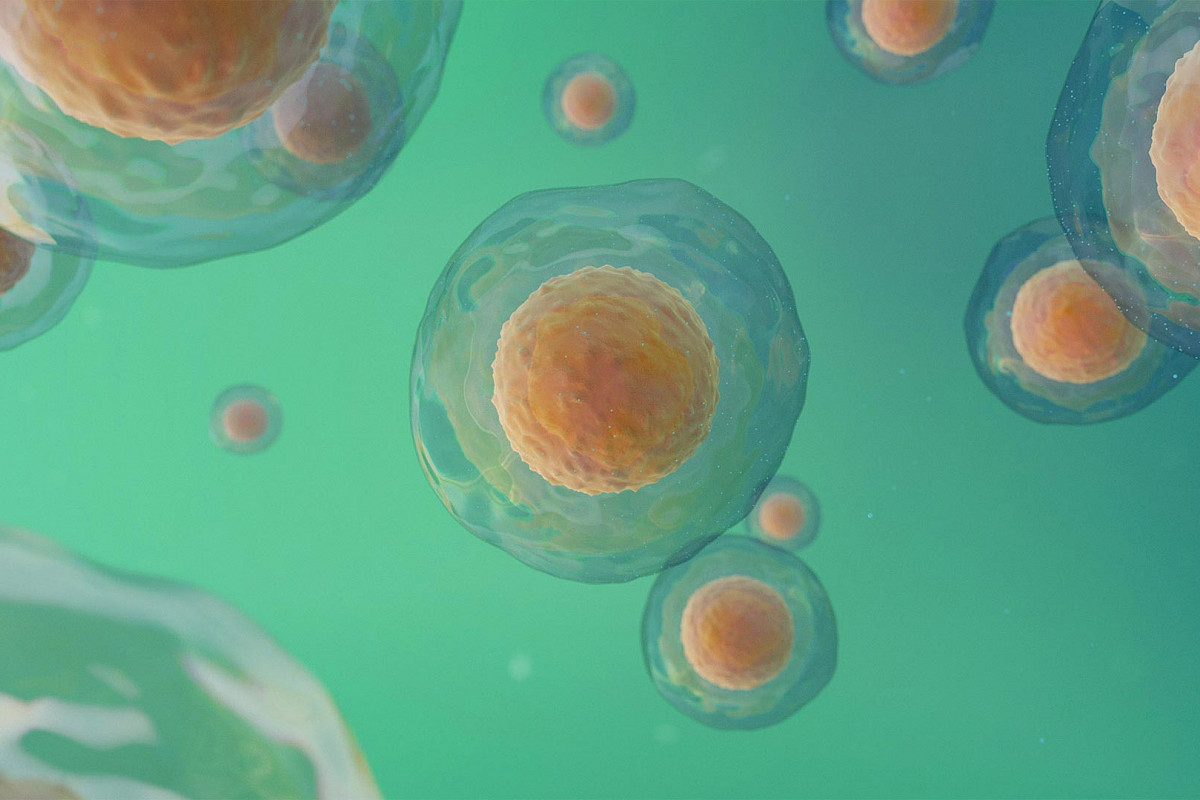User Spotlight
Into the Wilderness
Scientific Safari of Carnivorous Pitcher Plants with Dr. Skylar Johnson

Have you ever been captivated by carnivorous plants, whether as a curious child or an adventurous adult? These botanical hunters, like pitcher plants, evolved with pitcher-shaped leaves to create deadly traps for insects. Each leaf tells a story of survival in the fight between plants and insects. Thriving in nutrient-poor environments, these plants have been of great interest to scientists and plant enthusiasts for a long time.
One of them is Dr. Skylar Johnson, who also could not resist the mesmerizing trap of pitcher plants. So, after completing her Ph.D. in Plant Molecular Sciences at Washington State University (USA), she embarked on her journey of studying the carnivorous Nepenthes pitcher plants in Dr. Ulrike Bauer's lab, at the University of Bristol. Her research led her to the lush rainforests of Brunei Darussalam on the island of Borneo, where she spent three months exploring the botanical wonders. She bag-packed the Absorbance 96 and the Absorbance One to make bogs of Borneo as her research hub.
We caught up with Skylar to learn about her adventures, the impact of our devices on her research, and intriguing insights into carnivorous plants and fieldwork in the wild. Are you intrigued? Read on and don't be left wondering!
What sets pitchers apart from other carnivorous plants that make them so unique? Very curious to know!
Different carnivorous plants employ various trapping mechanisms. Take the Venus flytrap for example, which folds insects between its leaves, or those with suction cavities in roots that slurp microorganisms. Nepenthes, however, have a unique and I would say clever approach. Their pitcher-shaped leaves feature specialized tissue on the rim with fine ridges. So, when it's dry, insects can walk along it and there is no danger. But then when it rains, the rims become slippery. The moist surface turns the pitcher into a deadly trap, causing insects to hydroplane into the cavity, where they drown and provide essential nutrients for the plant. It's both insidious and clever, showcasing nature's cunning adaptations.

Fascinating! The deadly trap drowning insects seems like a black hole. So, is that the focus of your research work?
Exactly, I am looking at the fluid that drains the insects inside the pitcher. This soup is a mixture of water and digestive enzymes. However, the composition of it seems to vary among different Nepenthes species. One example is the viscoelastic component of the soup that contributes to forming the ribbons on the surface of the pitcher as well as the different proteases and phosphatases that contribute to the digestion process. So, my main goal focuses on studying what is in the soup inside the pitchers and how the plant regulates these components over the lifetime of the pitchers. Nepenthes can live long nevertheless these capturing structures last only around 8 to 6 weeks.
Could you share some of the bottlenecks and challenges you have encountered?
One of the main challenges I think we face, is the ability to study plants in their real environment, because there's a lot of biochemistry that can happen on a lab bench, but plants grow outside. So, in this sense, the portability of equipment in the field I would say is the main bottleneck in our research now.
Some groups have done good research in the lab, inducing the expression of proteases after feeding the plants. However, when the pitchers are in the wild, they are not fed regularly or monitored for 48 hours. In this case, there is much more variability. These plants in nature are exposed to much more stimuli and insects crawling over the edge of the pitcher may or may not fall into it.
"Since the plants in the wild are so inaccessible there's still a lot of questions about how they work living outdoors"
Absolutely, gaining a deeper understanding of the mechanisms in their natural habitat is crucial. Building on that, could you walk us through how you applied our devices in your project?
Our project centered on investigating the composition of fluid within the pitchers, employing spectrophotometers as our primary analytical tools. The portability of these devices proved instrumental during our field trip to Borneo, facilitating experiments conducted at field workstations.
We used the Absorbance One to study protein concentrations and performed protease assays to investigate the digestive properties of the pitcher fluid. Meanwhile, the Absorbance 96 enabled us to understand sugar levels through total carbohydrate assays. The data is now the foundation for ongoing research, and we plan to submit a manuscript soon, so you will get to know more about the project.
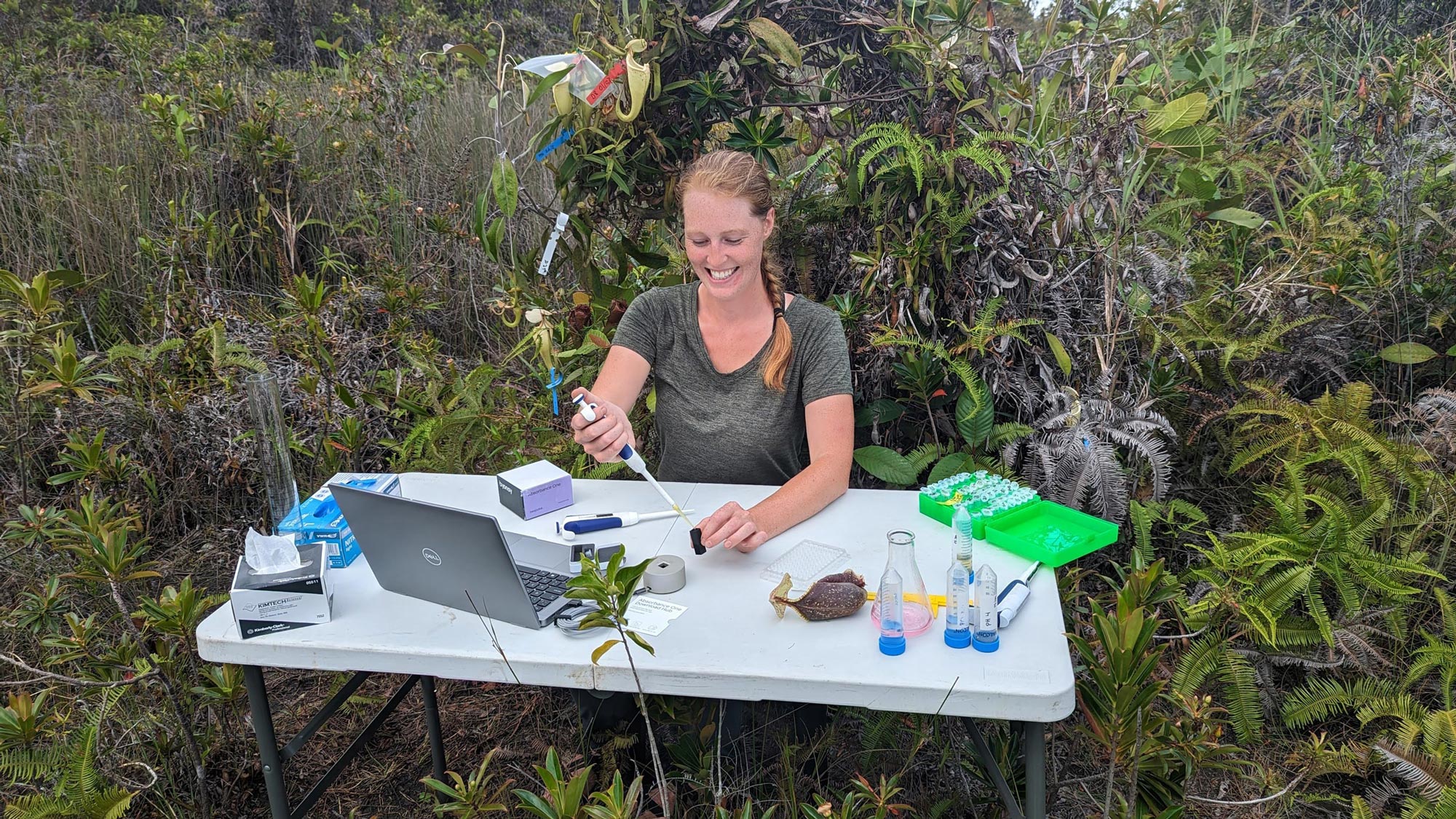
And what about the experimental setup? We'd love to hear about your expedition experience and what it was like working in the wild.
The botanical diversity on Borneo is truly astonishing—some plants mimic others just for the sake of it, creating a fascinating environment. The bog, though consistently waterlogged, became an immersive experience. After the initial day, I ditched my boots and took my sandals, turning it into a beach-like adventure, that was fun!
Our daily routine involved checking 16 pitchers on various plants. Equipped with a small kit comprising test tubes and a pipette, we would extract fluid samples each morning for analysis. Our improvised laboratory, equipped with pH meters, Absorbance 96, and Absorbance One, was set up at the field station because the university was far away. Everything we needed had to fit into our suitcases, making it quite an adventurous and resourceful endeavor.
Could you mention which specific feature of our devices you loved the most? And in terms of your research, how do you believe their use impacted your work?
One of the standout features I appreciate about your devices is their easy portability. This was crucial during our experiments since transporting samples to the nearest university, a two-and-a-half-hour journey, wasn't feasible. The convenience of conducting analyses on-site was indispensable.
Moreover, the user-friendly software was a significant plus. Its simplicity made the process efficient and saved valuable time. Lastly, the reliability of the spectrophotometers was impressive; repeated measurements consistently yielded accurate and dependable results.
"I plugged it in, and it worked perfectly anywhere! The software is intuitive, and it gives pretty consistent results"
It looks like the portability of our devices played a helpful role in overcoming challenges during your trip.
Indeed, the other spectrophotometers or microplate readers that we have in the lab are too big, they cannot be carried or brought in a suitcase on such an expedition. Instead, having these little guys made the whole experiment possible! Otherwise, there would have been no way to perform experiments in the woods in a bog.

Lastly, looking ahead, could you share any exciting plans for upcoming experiments? Are there any thoughts on incorporating our devices into your future projects?
We have exciting plans to delve into the study of plant-pathogen interactions. One of the key assays on our agenda involves measuring reactive oxygen species, and the Absorbance 96, with its specific wavelengths, aligns perfectly with the requirements for this type of assay. In addition, we also plan to perform an ELISA assay to look closely at specific proteins in the pitcher fluid, and here the possibility of spontaneously measuring with multiple wavelengths with Absorbance 96 will come in handy.
During the interview, we immersed ourselves in the captivating realm of carnivorous pitchers. Thanks, Dr. Skylar for shedding light on the challenges of studying them in their natural habitat, and intriguing aspects of the research. It's gratifying to learn that our devices played a pivotal role in enhancing Dr. Skylar's experience and her research.
Learn more about our products
Intrigued to discover how our devices can be your reliable companions during your field trip or in the lab? Deep deeper into the world of Absorbance One and Absorbance 96 to unlock their full potential.
